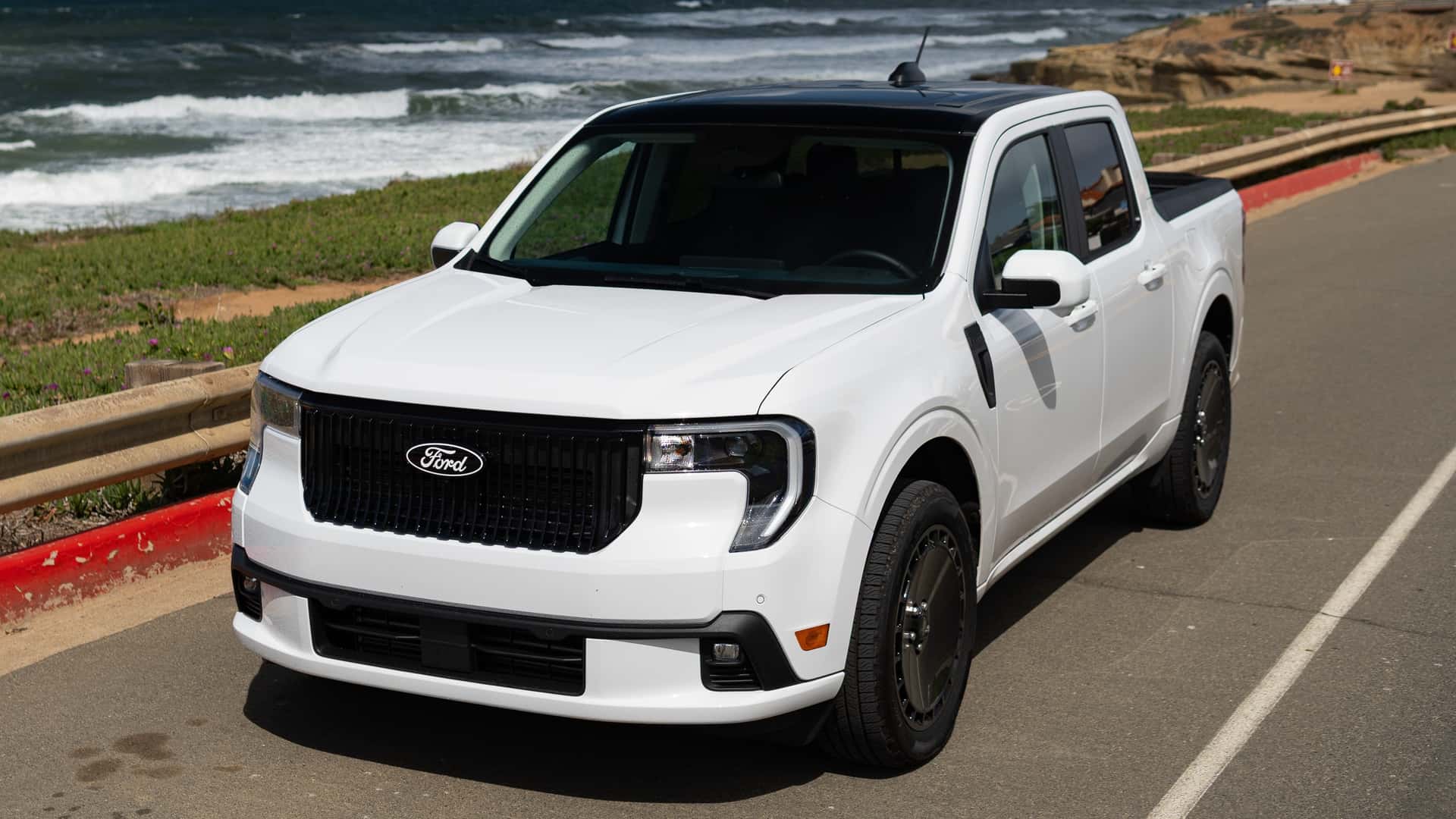
If anything, the Maverick Lobo would fare better if it were even more absurd.
Ford excels at discovering untapped territory in the truck market. The brand launched the contemporary luxury light-duty pickup we're familiar with today, virtually created the high-performance truck category with the F-150 Raptor, and revitalized the compact truck sector with the Maverick. In 2025, Ford aims to build on this success with an innovative passenger-car-derived urban truck tailored for lowriders. This model is named the Maverick Lobo, and it really stands out.
The word "kinda" plays a crucial role in this statement. On the face of it, proposing a unibody factory street truck seems like an odd proposition. The Maverick’s extended wheelbase, monocoque construction, absence of low-range gears, and considerable overhangs all contribute to making it a suboptimal choice for rough terrain travel. However, the Lobo —boasting 1.1 inches less ground clearance at the back and featuring a widebody kit—it doesn’t even try to market itself based on typical pickup truck credentials. It sits somewhere between a GMC Cyclone and a Ford Escape, resisting easy classification.
Admittedly, that is the risk associated with a "blank slate" car. However, if you're drawn to the concept of the Ford Maverick Lobo, driving it will be an even more thrilling experience.
| Quick Specs | 2025 Ford Maverick Lobo |
| Engine | Turbocharged 2.0-Liter Four-Cylinder |
| Output | 250 HP / 277 lb-ft of torque |
| Transmission | Seven-Speed Automatic |
| Drive Type | All-Wheel Drive |
| Starting Price / As Evaluated | $42,345 |
What Is the Purpose of the Lobo's Existence?
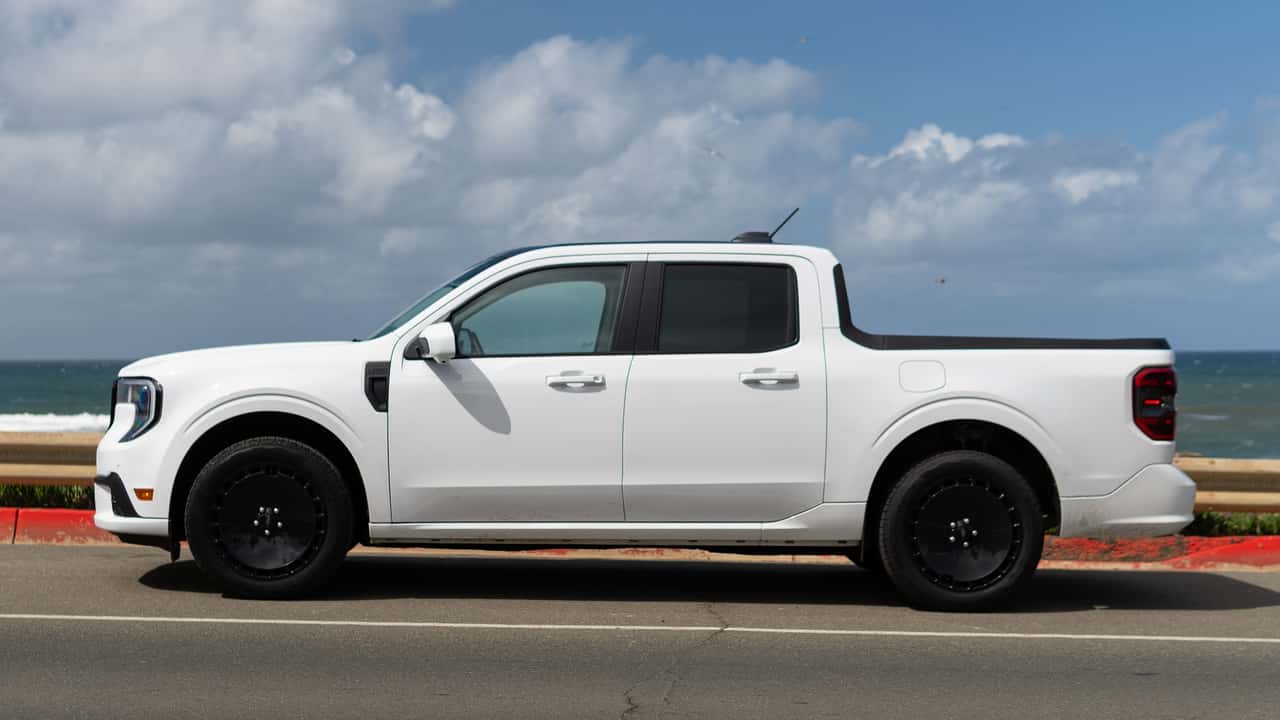
At its core, the $37,545 Maverick Lobo represents Ford’s effort to harness social media appeal through an out-of-the-box offering. Essentially, Ford execs saw people on Instagram Banging their Mavericks, they thought, "We should try that too." And so, they did.
Truck customization revolves around style and performance, with aesthetics taking precedence. In terms of design, Ford reduced the height of the Maverick Lobo by half an inch at the front and over an inch at the rear compared to the standard model. This adjustment brings the ground clearance down from a maximum of 8.4 inches in the original version to just 7.4 inches in this one. Additionally, Ford equipped it with a black rooftop, aerodynamic add-ons, and 19-inch "Turbofan" rims which individually appear stylish; however, they didn’t quite win me over in this configuration. You may want to consider spending extra for the conventional sports wheels, available as a $100 option instead.
The only major ding against the Lobo visually is the limited number of paint options: Black, white, gray, or an astounding shade of Velocity Blue (the correct option). It wears all four colors well, but given that lesser Mavericks can be had in better shades, it seems a missed opportunity. Still, the Lobo looks cool.
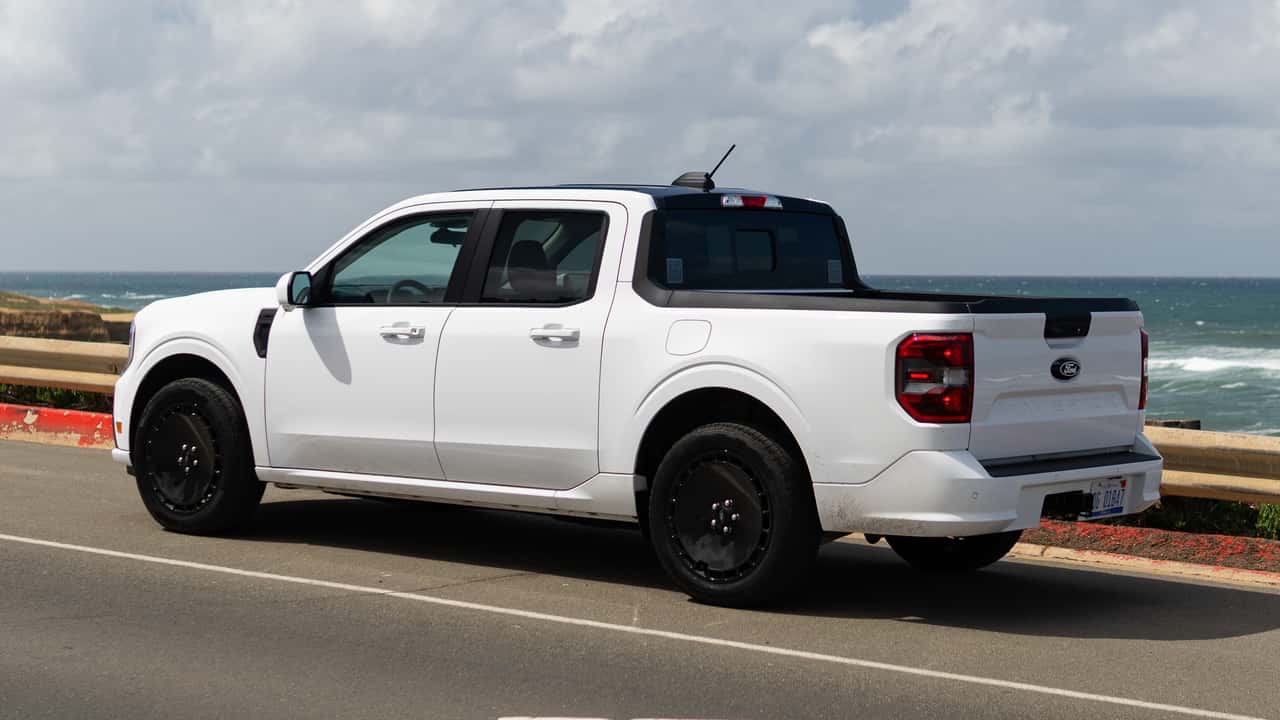
Pros: Fun To Look At, Easy To Slide, No Major Practicality Penalty
It needs to deliver on performance as well. In this case, Ford modified the recipe somewhat by enhancing the cooling system from the Max Tow Package and equipping it with a seven-speed automatic transmission sourced from the European-market Focus ST. Additionally, it features the torque-vectoring rear differential found in the Tremor model. However, the Lobo retains the same turbocharged 2.0-liter four-cylinder engine used in the regular Maverick, which produces 250 horsepower and 277 lb-ft of torque. Consequently, there isn’t an outright acceleration benefit.
So, the Lobo is meant to be the off-road pickup truck. Is that correct?
Kinda Fun, Kinda Flawed
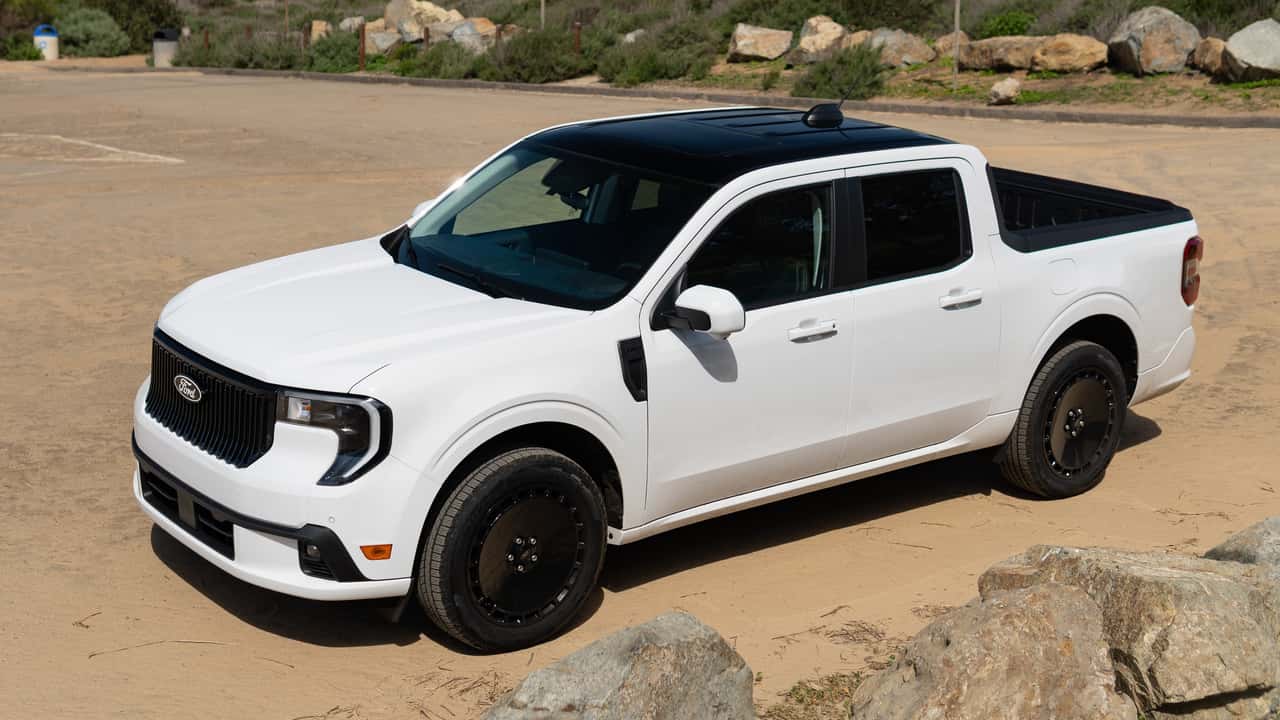
The Maverick Lobo surpasses expectations yet remains puzzling in its intent. Unlike most street trucks, which tend to be homemade efforts focused more on whimsical customization rather than speed, the Lobo comes from the manufacturer with enhanced suspension and steering adjustments. It also features a "Lobo" driving mode designed for racetrack conditions, along with a stability control system that allows the vehicle to embrace some drift when needed.
The enhancements transformed the Lobo into a standout performer on an autocross track. Despite being built on a front-wheel-drive platform, the Lobo’s torque-vectoring rear allowed for precise cornering, enabling controlled drifts. However, stability control does limit some of this excitement; nonetheless, the greater your acceleration and lesser your steering input, the more freedom you get to maneuver. Additionally, the vehicle exhibited sharp handling with manageable body lean and sufficient grip to facilitate swift directional changes.
It's unexpectedly impressive for such a "compact" pickup, even though it's longer than my old 2001 Chevy Tahoe. However, driving it isn't particularly enjoyable. The steering feels lifeless, the suspension relies heavily on complex differential adjustments, and the stability control leaves me feeling overly cautious. Additionally, the engine lacks charm—it seems optimized for torque at lower RPMs, producing an aggressive exhaust sound that fades just as things start getting interesting on the rev counter. Its extended rear overhang also makes navigating corners challenging; I hit several cones with the back bumper during our test drive.
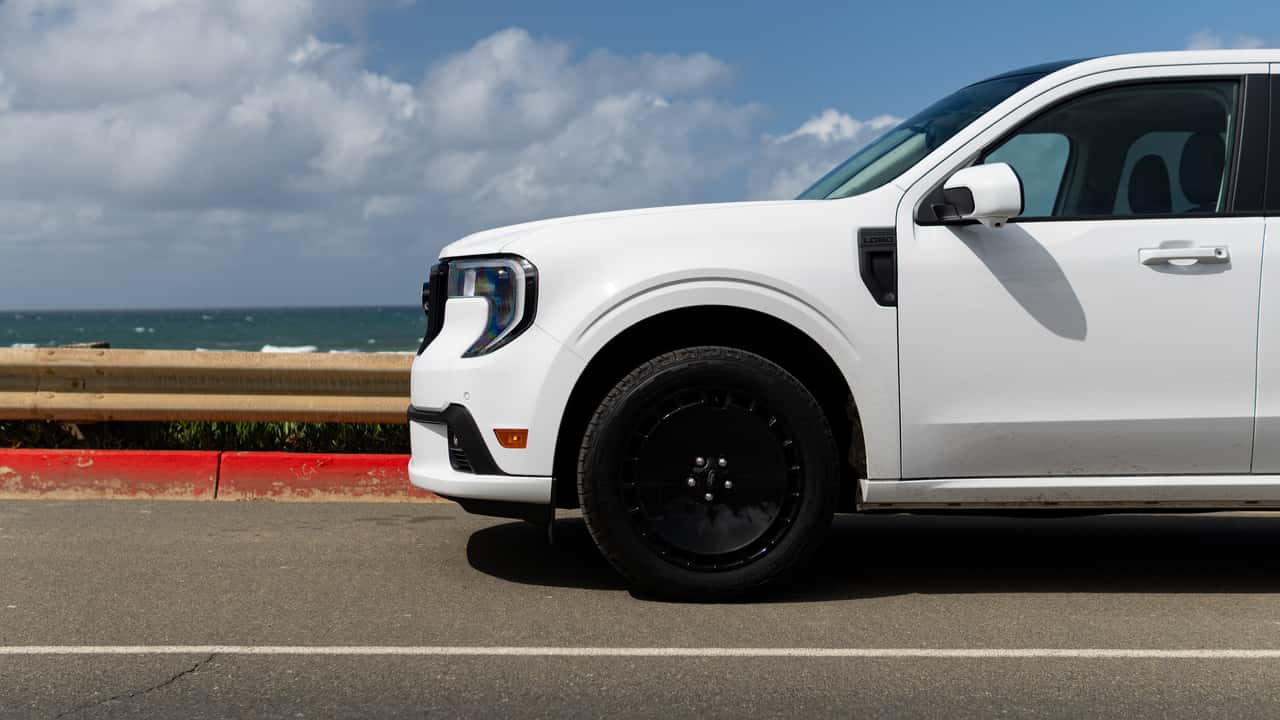
Drawbacks: Lacks Driving Enjoyment, Falls Short of a Custom-built Hot Rod
Even more so than before, the Lobo struggles on winding roads—it lacks feedback and excitement, making me less inclined to push its boundaries. Additionally, with the standard powertrain setup, the Lobo doesn’t have the speed needed for spirited highway entrance ramp driving.
The positive aspect is that, compared to a homemade street truck, the Maverick Lobo offers superior ride quality. It’s smooth enough for everyday use, though slightly firmer than the standard Maverick. Additionally, you won’t sacrifice much fuel economy with this setup, considering it uses the factory engine. The Lobo achieves 21 mpg in the city, 30 mpg on the highway, and 24 mpg overall. This means it falls short by just 1 mpg in urban areas when contrasted with the basic all-wheel-drive version, yet outperforms the Tremor by 3 mpg on highways.
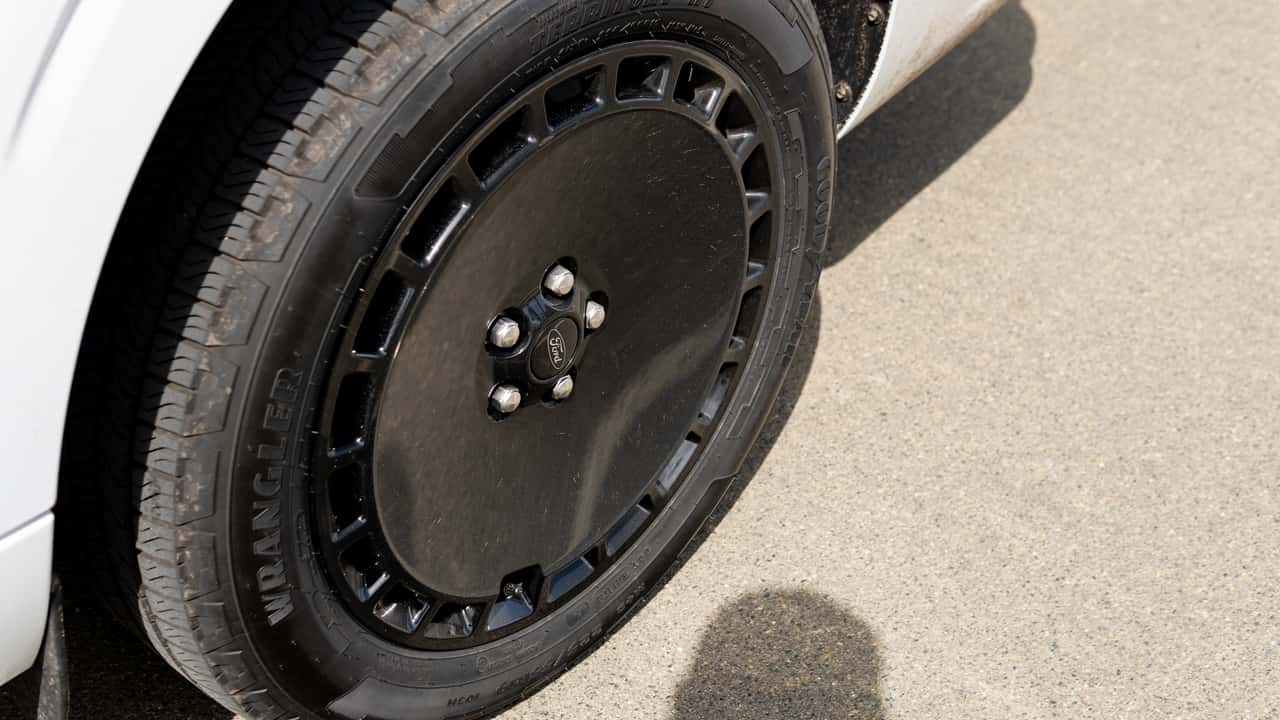
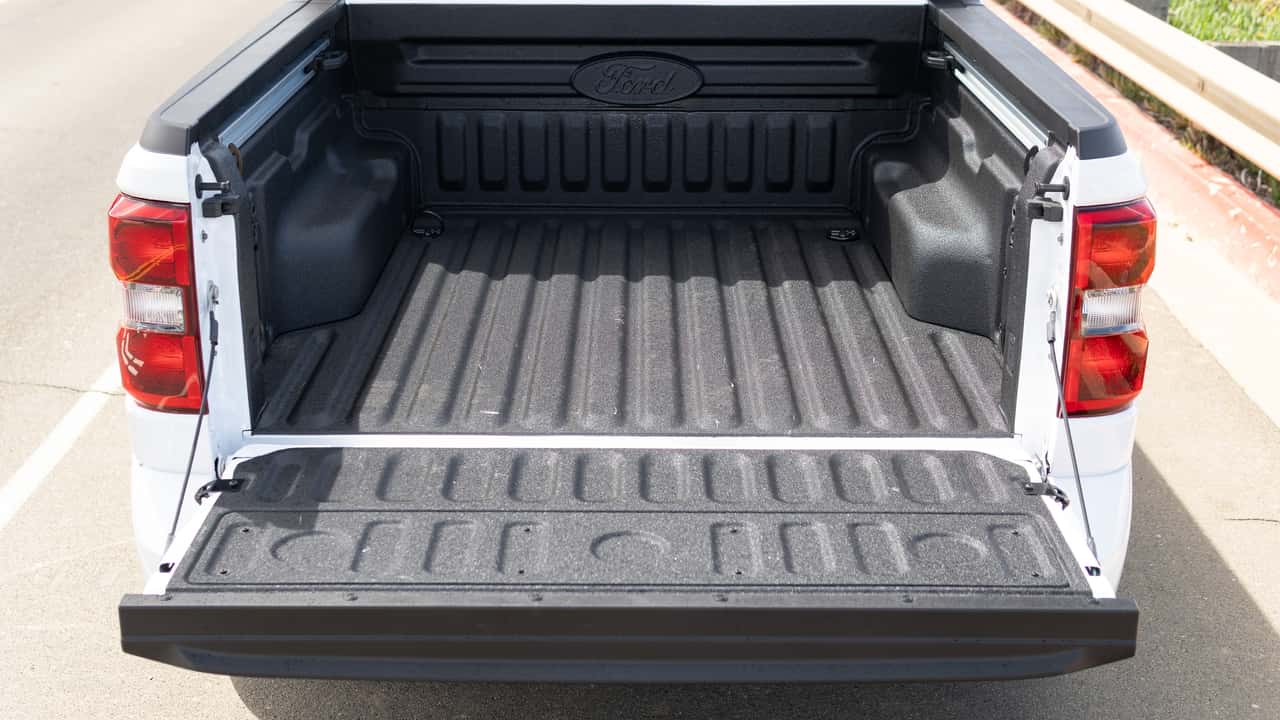
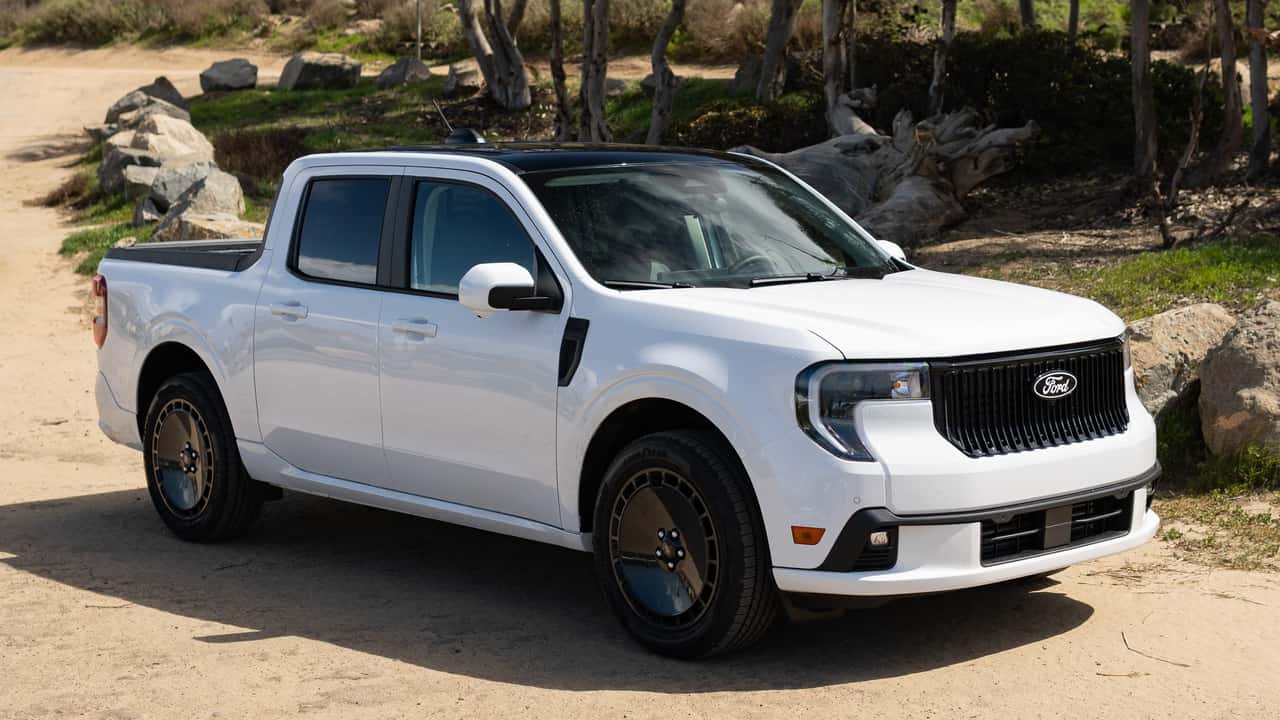
The inside of this vehicle is also quite pleasant. Similar to every 2025 Maverick model, the Lobo comes equipped with a 13.2-inch central touch screen supporting both Wireless CarPlay and Android Auto. It offers an environment within the cabin that seems practical yet sophisticated, avoiding any sense of cheapness. Additionally, the Lobo features distinctive Grabber Blue and Electric Lime thread work for added flair along with "graffiti-inspired" designs adorning the seats; however, largely it still gave me the impression of being seated in a typical Maverick.
The compromises arise when you wish to engage in Truck Activities. Similar to the Tremor, the Lobo has a notably reduced maximum cargo capacity compared to more basic versions. Its hauling capability stands at just 1,045 pounds, which is a decrease from the initial EcoBoost model’s 1,500-pound limit. When it comes to towing, this truck caps out at 2,000 lbs; meanwhile, hybrid options along with 2.0-liter variants equipped with the Max Tow package often manage to pull up to an impressive 4,000 lbs within city limits.
Street-Truck Silliness
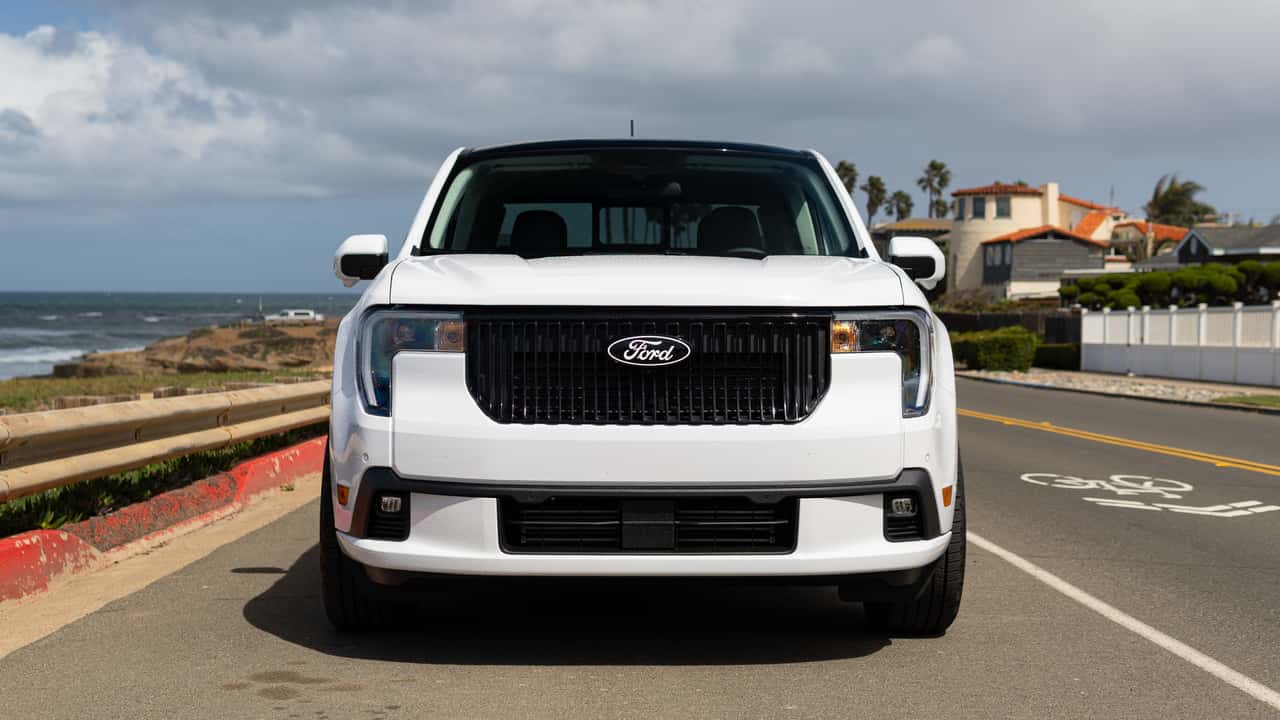
Stupid street trucks, I confess with affection. People don’t purchase a GMC Cyclone or a first-generation F-150 Lightning or a Ram SRT-10 to address an issue. They get them because these vehicles are absurd, and ridiculous trucks are awesome. Ford undoubtedly understands this, hence the illogical Lobo was created.
Nevertheless, Ford understands more than many why this market sector often emerges and disappears. What makes the Lobo special is its uniqueness—it’s new, thrilling, and sharply contrasts with the dominant lifted 2500 models.
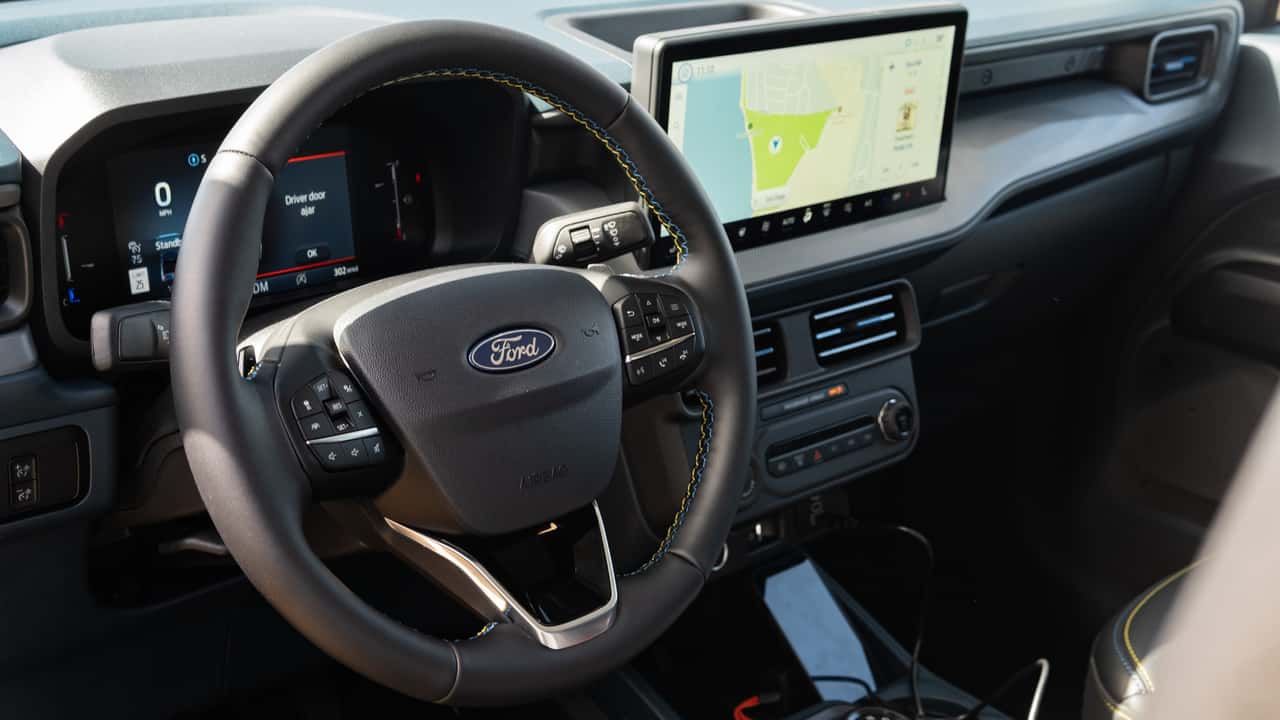
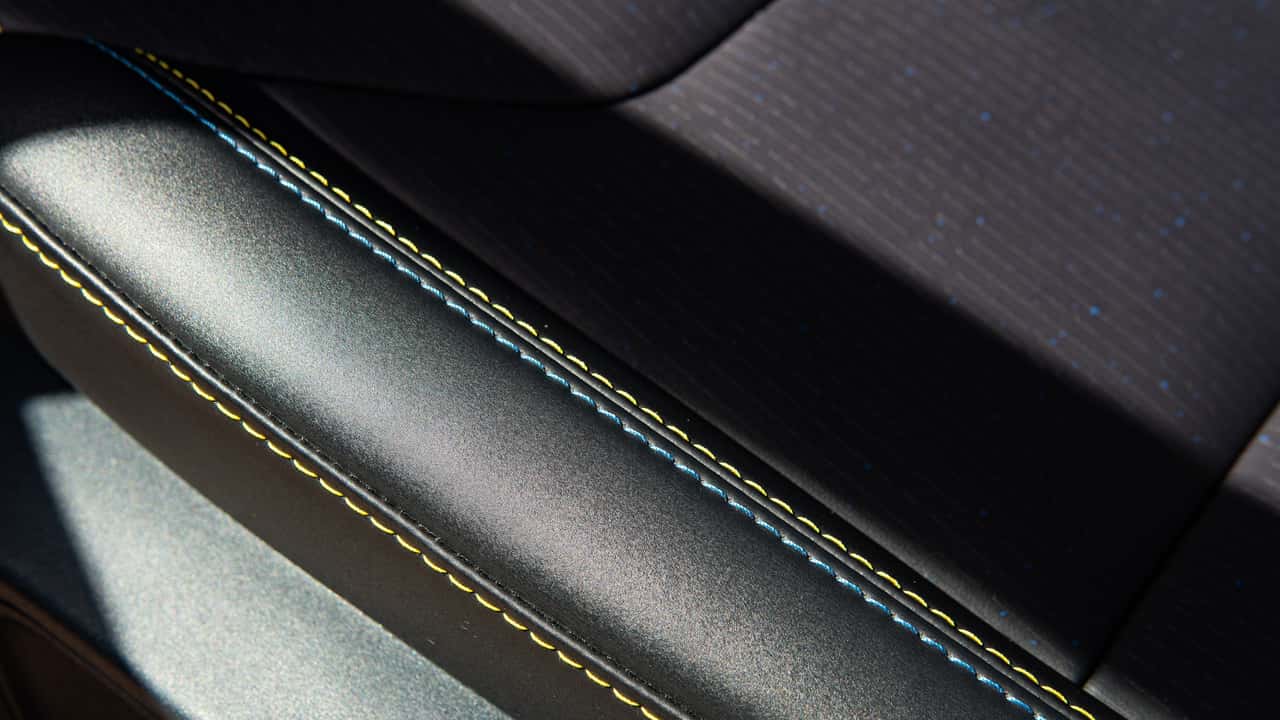
However, once the excitement wears off, we're still faced with an unaltered reality: Street trucks lack practicality. These vehicles continue to thrive in the customization market due to their appeal—even if it’s a lowered Tundra or a turbocharged Silverado—because people enjoy them. Customizability plays a key role in this culture, making it challenging for major brands like Ford to attract dedicated enthusiasts through standard models alone.
However, some laid-back enthusiasts desire a street-legal pickup with a warranty that they can use for their daily commute. The Maverick Lobo caters well to these individuals. But for the majority of us, the regular version of the Maverick turns out to be an even more appealing choice.
Competitors
- Hyundai Santa Cruz
| 2025 Ford Maverick Lobo | |
| Engine | Turbocharged 2.0-liter I4 |
| Output | 250 HP / 277 lb-ft |
| Transmission | Seven-Speed Automatic |
| Drive Type | All-Wheel Drive |
| Weight | 3,814 Pounds |
| Efficiency | 21 City / 30 Highway / 24 Combined |
| Seating Capacity | 5 |
| Towing | 2,000 Pounds |
| Payload | 1,045 Pounds |
| Cargo Volume | 33.0 Cubic Feet |
| Base Price | $42,345 |
| As-Tested Price | $42,345 |
| On Sale | Now |
